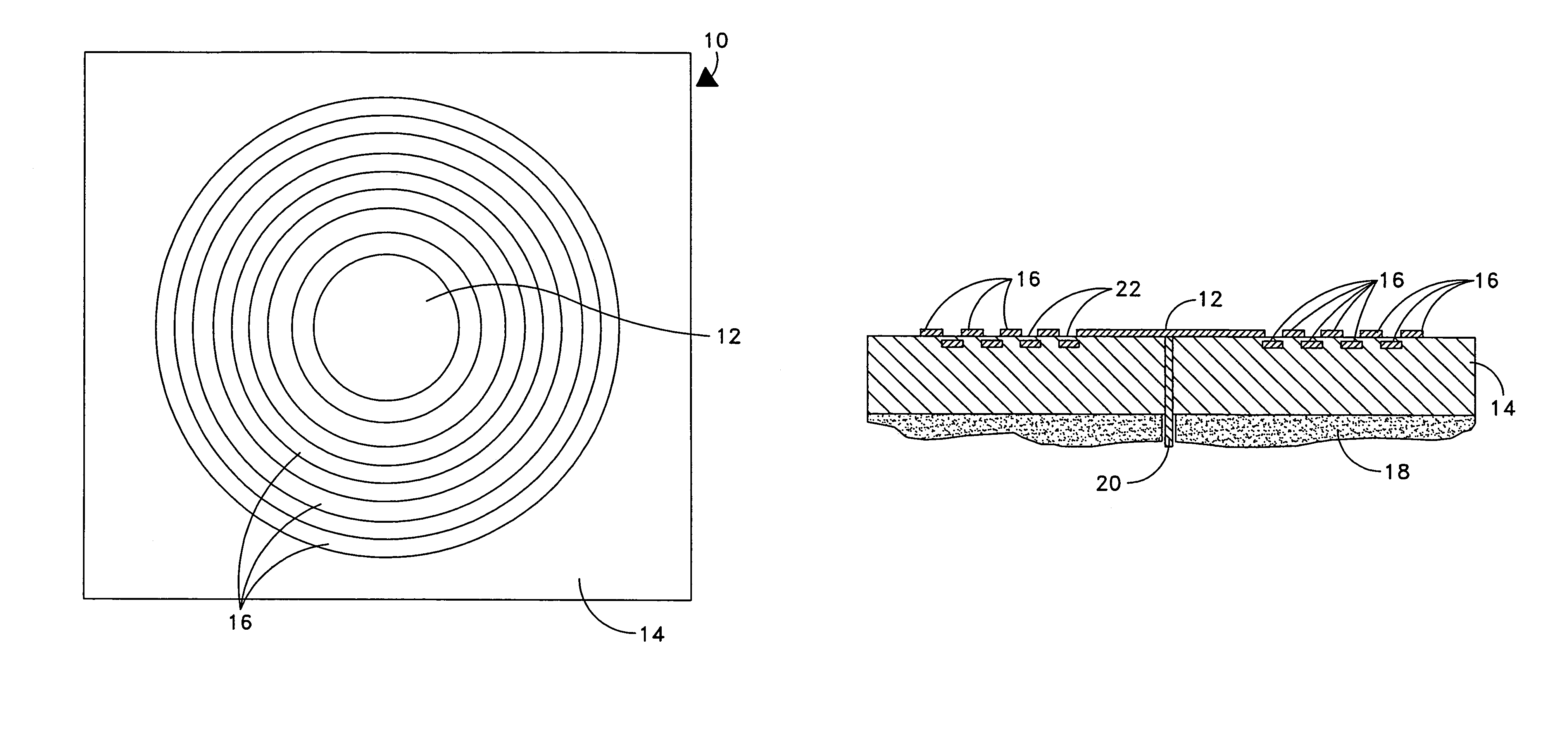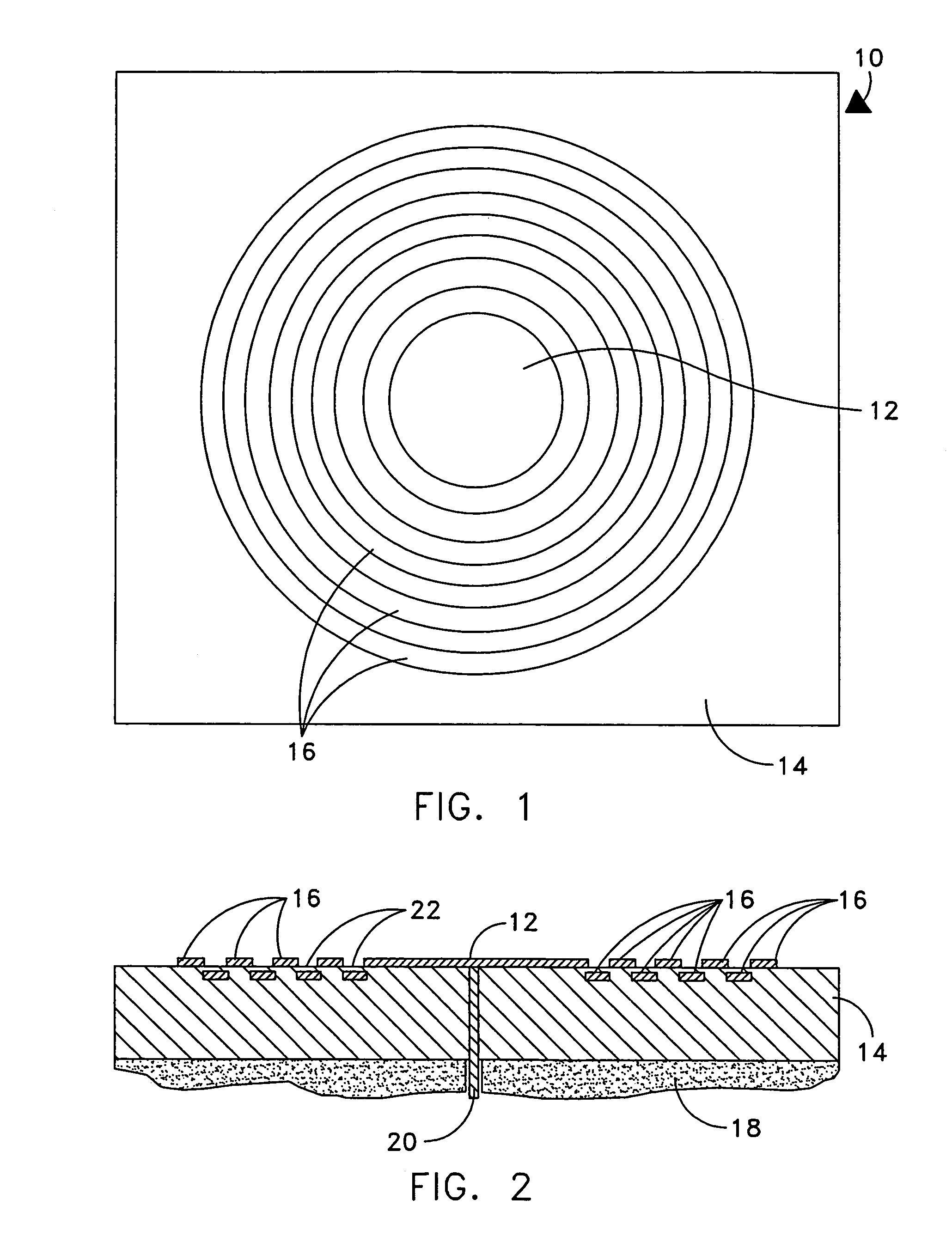Wideband traveling wave microstrip antenna
a microstrip antenna and traveling wave technology, applied in the direction of radiating element structure, resonance antenna, antenna earthing, etc., can solve the problems of limited bandwidth of microstrip antennas, large antennas, complex feed configurations, etc., to suppress the resonant behavior of microstrip antennas, and improve the performance of microstrip antennas.
- Summary
- Abstract
- Description
- Claims
- Application Information
AI Technical Summary
Benefits of technology
Problems solved by technology
Method used
Image
Examples
Embodiment Construction
[0013]Referring to FIG. 1 and FIG. 2, there is shown a microstrip patch antenna 10 having a “bulls-eye target” configuration. The antenna consists of a center disk 12, which is a conductor, positioned on a dielectric substrate 14. The dielectric substrate is positioned on a ground plane 18. The antenna also consists of annular sections 16 each having a different diameter. Each annular section 16 is also a conductor. The annular sections 16 are situated both on the surface of the dielectric substrate 14 and embedded beneath the surface of the dielectric substrate 14. The size of the annular sections 16 depends on the frequency of the antenna. Typically, a minimum of 5 or 6 segments are needed to create enhanced bandwidth, the greater the number of segments, the greater potential for increased bandwidth. The annular sections 16 are arranged in a progressively concentric pattern starting from the center disk 12 such that each annular section 16 on the surface of the dielectric substrat...
PUM
 Login to View More
Login to View More Abstract
Description
Claims
Application Information
 Login to View More
Login to View More - R&D
- Intellectual Property
- Life Sciences
- Materials
- Tech Scout
- Unparalleled Data Quality
- Higher Quality Content
- 60% Fewer Hallucinations
Browse by: Latest US Patents, China's latest patents, Technical Efficacy Thesaurus, Application Domain, Technology Topic, Popular Technical Reports.
© 2025 PatSnap. All rights reserved.Legal|Privacy policy|Modern Slavery Act Transparency Statement|Sitemap|About US| Contact US: help@patsnap.com


